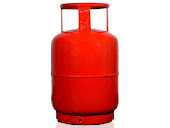Oil is still indispensable
Year 2011 was been a year of records for the oil business. It was a year when despite the sovereign debt tumult in Europe, the consumer “balance sheet”, recession in the US and the general economic slowdown in the BRIC countries, the price, demand, revenues and expenditures related to petroleum have all touched historic highs. The year has reaffirmed the indispensability of oil and the vulnerability of countries that, either for reasons of geology or policy, are stuck in the groove of import dependence. It has provided a touchstone for the Ministry of Petroleum to set its policy priorities for 2012.
Over the past 12 months, the price of the benchmark light Brent crude oil has averaged $110/barrel. This is the highest average price in real and nominal terms since Colonel Drake first struck oil in 1859 in the small timber town of Titusville in North Pennsylvania. Global demand has, during this period, hovered just below 90 million barrels. Here too, the figure has touched a historic high. OPEC has, in consequence, earned over a trillion dollars. Only once before in 2008 has their revenue crossed this mark. On the flip side, oil importing countries and in particular, China and India, have seen a record outflow of foreign exchange on their crude oil account. The general consumer too has spent a record proportion of his income on energy for lighting, heating and transportation. Caught between the pincer of squeezed earnings and high prices, thousands have been pushed into “fuel poverty”, especially in countries that do not subsidise energy.
These records throw into sharp relief the pivotal and enduring significance of petroleum. Sure, the price of oil may slip back into double digits in 2012. For demand is declining and production from countries like Libya and Iraq, which had been convulsed by geopolitics, is now re-entering the market. But such a slip, if it did occur, must not be grounds for complacency — at least not in economies like India that are moving into their next, more energy-intensive, phase of development and where their emergent, urbanising middle class is looking to trade up from a cycle to a two-wheeler to a Nano equivalent. For there are few, if any, immediately available commercial alternatives to oil, especially as a transport fuel. CNG (compressed natural gas) for example which has been mandated by the Supreme Court as the fuel for our buses, taxis and 2-wheelers in major cities has a low energy density and cannot therefore be a substitute for the diesel used by the heavy duty long haul transporters. LNG (liquefied natural gas) on the other hand, which has a higher energy density and could, therefore, be the substitute, cannot be used without the development of expensive infrastructure and the redesign and retrofitting of existing engines. The fundamentals of demand and supply do not in short provide a solid base for assuming a prolonged downward shift in prices.
It is with this backdrop of 2011 that the petroleum ministry should review its policy towards exploration and production (EP) of hydrocarbons. It should do so also because of the worsening imbalance between demand and supply. Today India imports more than 80 per cent of its crude oil requirements. EP has long been a policy priority for the ministry. To reiterate that it should occupy pole position in its agenda is not therefore an original thought. But in recent months the signals emanating from the ministry have suggested that there is a gap between rhetoric and practice.
The rhetoric encourages the involvement of private capital. It accepts that EP is an inherently risky and uncertain activity involving not just the challenge of locating hydrocarbons but also, once located, the challenge of developing and producing the hydrocarbons on a commercially sustainable basis. It also accepts that to harness its hydrocarbon potential, India must bring to bear the optimum combination of capital, technology and operational expertise into EP and create a policy framework that attracts the broadest spectrum of petroleum companies from both the public and private sector.
Unfortunately, in practice, things are different. The industry is concerned at the reinterpretation of the contractual clauses related to tax, marketing and prices. They are questioning the rationale behind the continual debate over operating practices. Their foreheads are creased with worry about what they regard as rigidity and lassitude in decision making. Whether warranted or not, this perception has cast a somewhat ambivalent pallor on the EP environment. It is a situation that the country can ill afford. For with the end of the “era of easy oil” and the reality that new discoveries will most likely be found in harsh terrain and geologically complex structures, the private sector is a necessary factor for EP success. This is not to dilute the role of the public sector. In fact, some of the major EP breakthroughs in recent years have been spearheaded by state-owned companies. The unlocking of billions of barrels by PetroBras — the Brazilian PSU — in the presalt reservoirs of the Santos basin in Brazil is a case in point. It is merely to emphasise that private companies must not be deterred. Their contribution to the production of hydrocarbons in India is already material. In 2010-11, for instance, they produced 10.67 mt and 25.5 bcm of oil and gas respectively up from 5.07 mt and 7.72 bcm in 2006-07.
Those of us who have followed the corruption scandals that have bedevilled governance can appreciate the pressures imposed on officials by the sword of Damocles wielded by the CBI, CVC and CAG. We can understand why, under such circumstances, “acts of omission” are deemed safer than “acts of commission”. But this cannot justify ignoring the underlying message of 2011. EP policy must be reinvigorated and if not done the country will pay a huge and enduring price in terms of energy security and economic growth. The writer is chairman of the Shell Group in India.
http://www.indianexpress.com/news/oil-is-still-indispensable/894602/
Read More...





